
Journal of Civil Structural Health Monitoring
Scope & Guideline
Elevating standards in civil and structural engineering research.
Introduction
Aims and Scopes
- Structural Health Monitoring (SHM) Techniques:
The journal emphasizes innovative SHM techniques that utilize advanced algorithms, machine learning, and data analytics to assess the condition of structures such as bridges, dams, and buildings. - Integration of AI and Machine Learning:
There is a strong focus on leveraging artificial intelligence (AI) and machine learning methodologies for predictive maintenance and damage identification, enhancing the accuracy and efficiency of monitoring systems. - Sensor Technologies and Data Acquisition:
The journal explores various sensor technologies, including fiber optics, wireless sensors, and UAV-based systems, for real-time data acquisition and structural assessment. - Environmental Impact on Structures:
Research frequently addresses how environmental factors, such as temperature and seismic activity, influence the performance and health of civil structures. - Innovative Modeling and Simulation Approaches:
The journal promotes the use of advanced modeling and simulation techniques, such as finite element methods and digital twins, to predict structural behavior and optimize maintenance strategies. - Damage Detection and Assessment:
A core area of focus is the development of methodologies for the identification and quantification of damage in civil infrastructure, employing a variety of experimental and computational approaches.
Trending and Emerging
- Digital Twin Technology:
There is a rising trend in the adoption of digital twin technology, enabling real-time monitoring and simulation of structures for enhanced decision-making in maintenance and safety. - Advanced Machine Learning Applications:
Recent publications show an increased interest in sophisticated machine learning techniques for predictive analytics and damage detection, indicating a shift toward data-driven approaches. - Real-Time Monitoring Systems:
The development of real-time monitoring systems utilizing IoT and AI has become a prominent theme, highlighting the need for immediate data processing and response capabilities. - Environmental and Climate Resilience:
Emerging research themes focus on the resilience of structures to climate change, particularly in understanding how environmental factors affect structural integrity. - Integration of Multisensor Data Fusion:
The trend toward integrating data from multiple sensors for a comprehensive assessment of structural health is gaining attention, emphasizing the importance of holistic monitoring approaches.
Declining or Waning
- Traditional Non-Destructive Testing (NDT) Methods:
There has been a noticeable decrease in publications centered on conventional NDT methods like visual inspection and basic ultrasonic testing, as newer technologies and methodologies gain traction. - Static Structural Analysis:
Research focusing on static analysis techniques has waned, possibly due to a growing emphasis on dynamic behavior and real-time monitoring in the context of structural health. - Generalized Structural Evaluation Approaches:
The journal has shifted away from broad, generalized approaches to structural evaluation, favoring more specific, application-driven research that addresses particular challenges in SHM.
Similar Journals
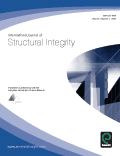
International Journal of Structural Integrity
Fostering Interdisciplinary Insights in Structural IntegrityInternational Journal of Structural Integrity is a premier peer-reviewed academic journal published by EMERALD GROUP PUBLISHING LTD in the United Kingdom. As a valuable resource in the fields of Civil and Structural Engineering, Mechanical Engineering, and Mechanics of Materials, this journal serves to advance knowledge and foster innovation in these critical areas of study. With an impressive impact factor reflected in its 2023 category quartiles, ranking Q2 across multiple engineering disciplines, the journal is recognized for its contributions to research and practical application. Researchers can benefit from its rigorous publishing standards that encompass a wide array of interdisciplinary topics pertaining to structural integrity. Accessing the journal is facilitated for those seeking high-quality research and findings, vital to both academia and industry. Since its inception in 2010 and extending until 2024, the journal continues to attract scholarly articles that push the boundaries of engineering knowledge, making it an essential platform for professionals, students, and researchers seeking to stay at the forefront of structural engineering."

Frontiers of Structural and Civil Engineering
Innovating Solutions for Tomorrow's Structural ChallengesFrontiers of Structural and Civil Engineering, published by HIGHER EDUCATION PRESS, is a premier academic journal dedicated to advancing the fields of architecture, civil, and structural engineering. With an ISSN of 2095-2430 and E-ISSN of 2095-2449, this journal caters to the dissemination of high-quality research and innovative practices from 2012 onwards, highlighting important developments up until 2024. Ranked in the top quartile (Q1) for Architecture and Q2 for Civil and Structural Engineering in 2023, it holds an impressive Scopus ranking of #19 out of 189 in Architecture and #101 out of 379 in Civil and Structural Engineering, reflecting its impact and relevance in the scientific community. This journal invites contributions that demonstrate pioneering approaches, fostering collaboration among researchers, professionals, and students alike, and significantly contributes to the global knowledge base in the engineering disciplines.

Ingegneria Sismica
Pioneering knowledge in geotechnical engineering and seismic resilience.Ingegneria Sismica, a premier journal published by PATRON EDITORE S R L, serves as an essential platform for the dissemination of research in the fields of building and construction, geotechnical engineering, and safety risk management. With a focus on earthquake engineering and structural safety, the journal has established itself as a prominent source of knowledge since its inception in 2010. The journal holds an impressive Q2 classification in multiple categories, including Building and Construction and Geotechnical Engineering, reflecting its significant impact within these disciplines. Despite its Italian roots, it appeals to an international audience of researchers, professionals, and students dedicated to advancing the understanding of seismic resilience and risk mitigation strategies. Although open access is not currently available, the potential for knowledge sharing and innovative methodologies presented in the articles continues to attract a robust readership. With its commitment to excellence and relevance, Ingegneria Sismica is poised to shape future discourse in engineering practices aimed at enhancing safety, reliability, and quality within seismic zones.
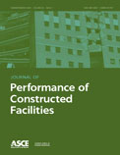
JOURNAL OF PERFORMANCE OF CONSTRUCTED FACILITIES
Enhancing the Reliability of Civil Infrastructure Through ResearchJOURNAL OF PERFORMANCE OF CONSTRUCTED FACILITIES, published by the ASCE-AMERICAN SOCIETY OF CIVIL ENGINEERS, is a leading peer-reviewed journal dedicated to the field of civil engineering with a strong emphasis on the performance assessment and sustainability of constructed facilities. Established in 1987 and converging through 2024, this journal has garnered a solid reputation with an impressive Q2 quartile ranking across key areas including Building and Construction, Civil and Structural Engineering, and Safety, Risk, Reliability and Quality. The journal's Scopus rankings further underline its significance, being positioned within the top percentiles of these domains. As it aims to publish innovative research, case studies, and reviews, the journal serves as a vital resource for professionals and academics who are keen on advancing their understanding of the complexities associated with the performance and reliability of civil infrastructure. Researchers and practitioners interested in the latest advancements in construction performance can greatly benefit from the insights and findings published in this esteemed journal.
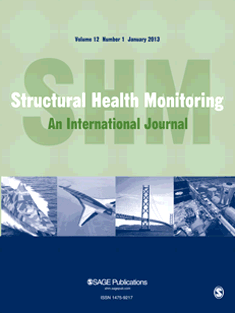
STRUCTURAL HEALTH MONITORING-AN INTERNATIONAL JOURNAL
Exploring Interdisciplinary Frontiers in Structural HealthSTRUCTURAL HEALTH MONITORING-AN INTERNATIONAL JOURNAL, published by SAGE PUBLICATIONS LTD, stands at the forefront of interdisciplinary research in the fields of Biophysics and Mechanical Engineering, with an impressive 2023 ranking of Q1 in both categories. Since its inception in 2002, this journal has provided a critical platform for scholars and practitioners to disseminate innovative methodologies and findings concerning the assessment, monitoring, and management of structural integrity across various applications. With a robust Scopus ranking of #28 out of 672 in Mechanical Engineering and #8 out of 152 in Biophysics, the journal underscores its commitment to excellence and relevancy in advancing the science of structural health monitoring. Dedicated to fostering collaboration and knowledge sharing, the journal welcomes contributions that push the boundaries of conventional systems, enhancing safety, efficiency, and sustainability in engineering practices. Researchers, professionals, and students are encouraged to explore the wealth of knowledge this journal offers, as it continues to shape the future of structural health monitoring up to 2024 and beyond.
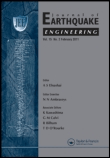
JOURNAL OF EARTHQUAKE ENGINEERING
Building a safer tomorrow with cutting-edge insights.JOURNAL OF EARTHQUAKE ENGINEERING, published by TAYLOR & FRANCIS LTD, stands as a pivotal resource in the fields of Building and Construction, Civil and Structural Engineering, and Geotechnical Engineering. With an impressive Q1 ranking in multiple categories for 2023, this journal is instrumental for researchers, professionals, and students committed to advancing knowledge in earthquake engineering and its practical applications. As a platform that spans the years from 1997 to 2024, it highlights significant contributions to safety, risk, reliability, and quality in engineering practices. While the journal operates on a subscription basis, its highly regarded articles, bolstered by robust Scopus rankings—such as rank #46 in Building and Construction—underscore its credibility and influence in shaping standards and methodologies within the discipline. Promoting innovative and evidence-based approaches, the JOURNAL OF EARTHQUAKE ENGINEERING is essential reading for anyone engaged in the science and technology of earthquake-resistant structures.
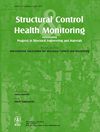
Structural Control & Health Monitoring
Fostering Collaboration in Structural Engineering ExcellenceStructural Control & Health Monitoring, published by John Wiley & Sons Ltd, is a premier academic journal dedicated to advancing the fields of structural engineering, building and construction, and mechanics of materials. With a commendable Q1 status in three key categories and a strong presence in the scientific community, this journal boasts an impressive ranking of #20 in Building and Construction and #35 in Civil and Structural Engineering, reflecting its significant impact and relevance. Since transitioning to Open Access in 2023, the journal provides unrestricted access to innovative research, promoting a wider dissemination of crucial findings and methodologies. It specializes in the dissemination of advancements in health monitoring techniques, structural integrity evaluation, and control systems, aimed at researchers, professionals, and students seeking to enhance their understanding of contemporary challenges in structural management. With converged years spanning from 2004 to 2024, Structural Control & Health Monitoring remains committed to fostering a collaborative environment where cutting-edge research meets practical applications, positioning itself as an essential resource for those at the forefront of the engineering discipline.
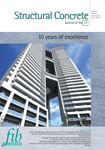
Structural Concrete
Shaping Tomorrow's Structures with Concrete KnowledgeStructural Concrete, published by ERNST & SOHN, is a premier journal dedicated to the field of Civil and Structural Engineering, focusing on innovative research and advancements in concrete materials and technologies. With an impressive impact factor and a consistent ranking in the Q1 category of both Building and Construction and Civil and Structural Engineering, the journal stands as a vital resource for researchers, professionals, and students alike. It is indexed with notable Scopus ranks, underscoring its significance within the academic community. The journal spans a comprehensive scope (from 2001 to the present) that encompasses diverse topics related to the behavior, design, and application of structural concrete. Although not an open access publication, it offers valuable insights and cutting-edge knowledge that contribute to the ongoing evolution of construction practices and materials science. Structural Concrete is an essential platform for sharing pioneering findings and fostering collaboration within this dynamic field.
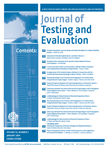
JOURNAL OF TESTING AND EVALUATION
Unveiling Insights for Enhanced Material PerformanceWelcome to the JOURNAL OF TESTING AND EVALUATION, an esteemed publication dedicated to the fields of materials science and mechanical engineering, published by the American Society for Testing and Materials. With a history of excellence since its inception in 1973 and a convergence of insightful research extending to 2024, this journal serves as a pivotal platform for disseminating innovative research, methodologies, and findings in testing and evaluation processes. Although it is not an open-access journal, it holds a respectable impact with a ranking in the third quartile across various categories and Scopus ranks, making it an important resource for academic and industry professionals alike. By providing rigorous evaluation of materials and engineering practices, the JOURNAL OF TESTING AND EVALUATION continues to shape the future of research in these dynamic fields, offering vital contributions that are essential for advancing knowledge and practical applications.

Earthquakes and Structures
Fostering interdisciplinary insights for resilient infrastructures.Earthquakes and Structures is a prestigious academic journal published by TECHNO-PRESS, dedicated to the field of Civil and Structural Engineering. Since its inception in 2010, this journal has provided a platform for innovative research and practical applications, addressing critical challenges related to seismic activities and their impact on infrastructure. With an ISSN of 2092-7614 and an E-ISSN of 2092-7622, it is indexed in top databases, reflecting its commitment to quality and relevance, as indicated by its Q3 quartile ranking in 2023. The journal encompasses a wide range of topics, from theoretical investigations to real-world case studies, appealing to researchers, professionals, and students alike. By fostering interdisciplinary collaboration and disseminating cutting-edge findings, Earthquakes and Structures plays an essential role in advancing knowledge and practices in earthquake engineering, enhancing global resilience against seismic threats.